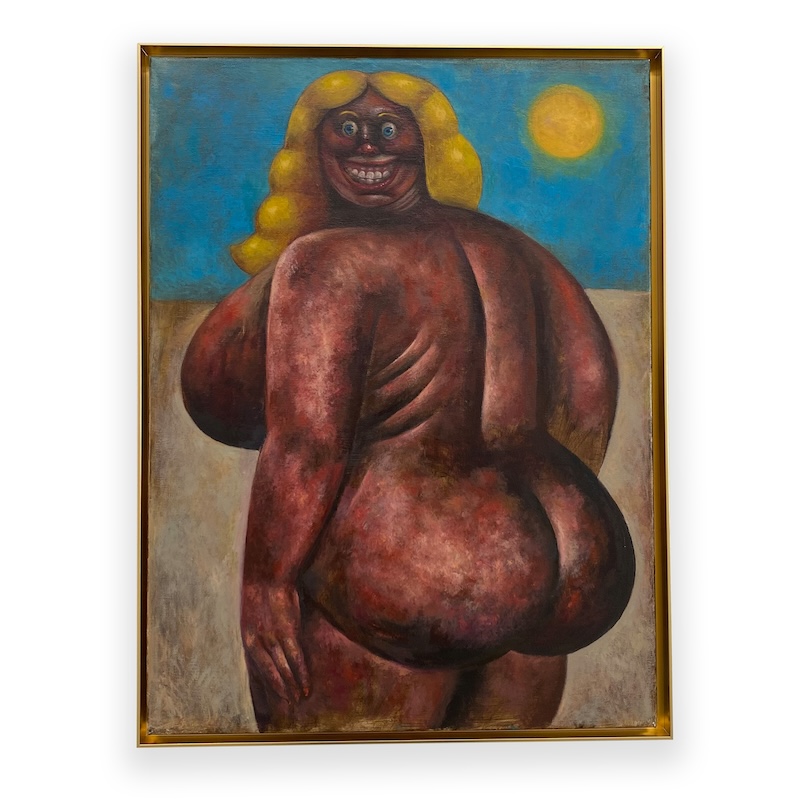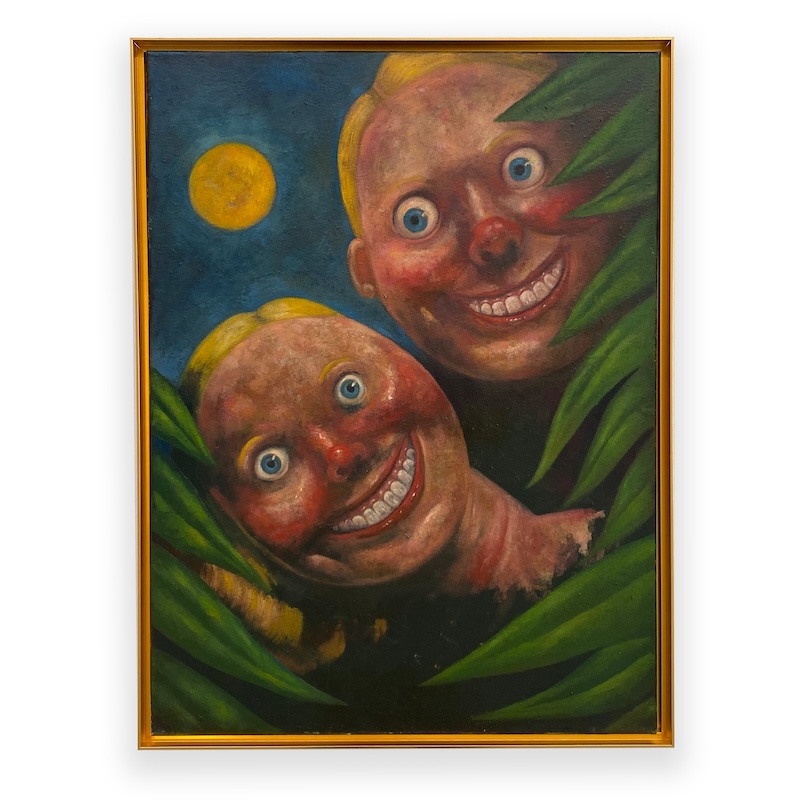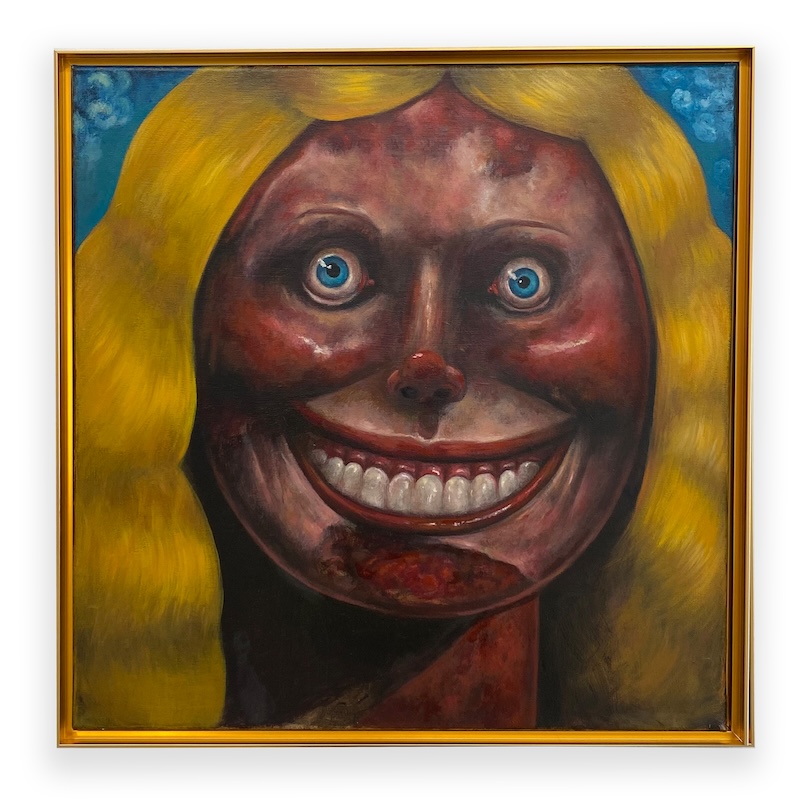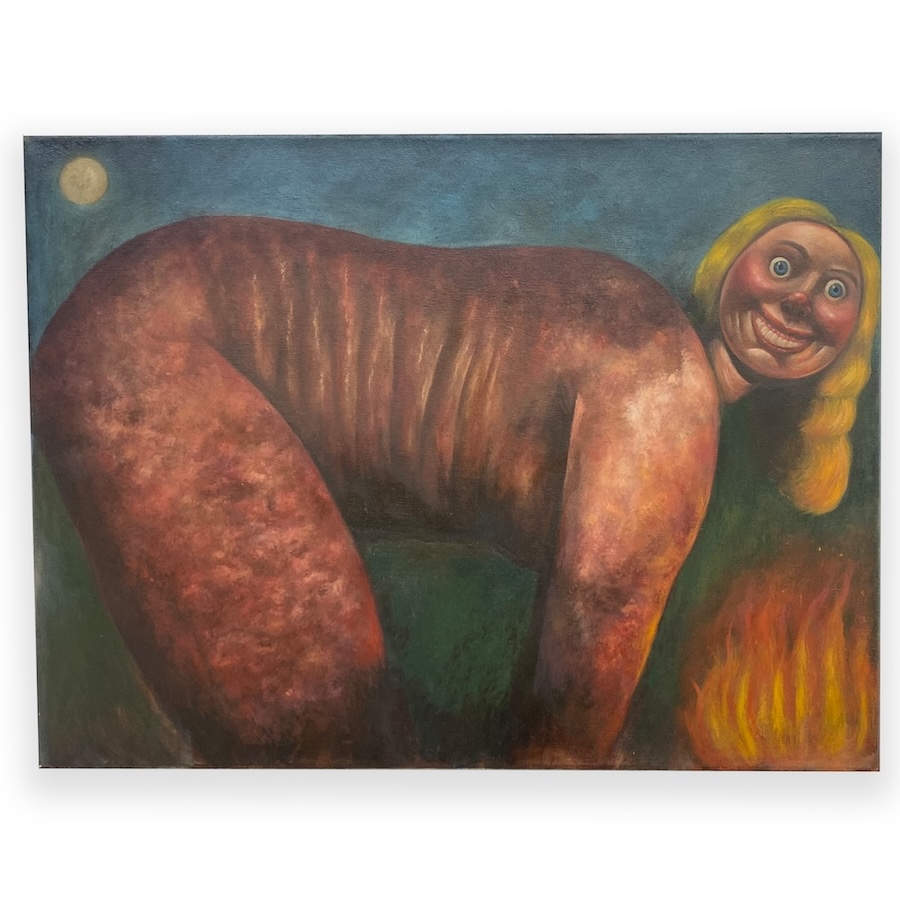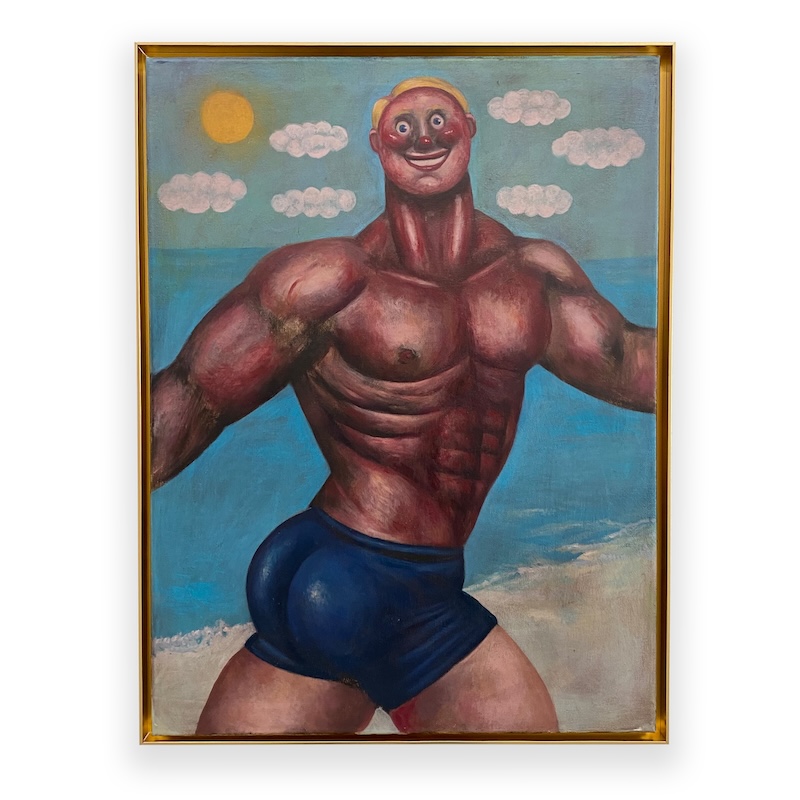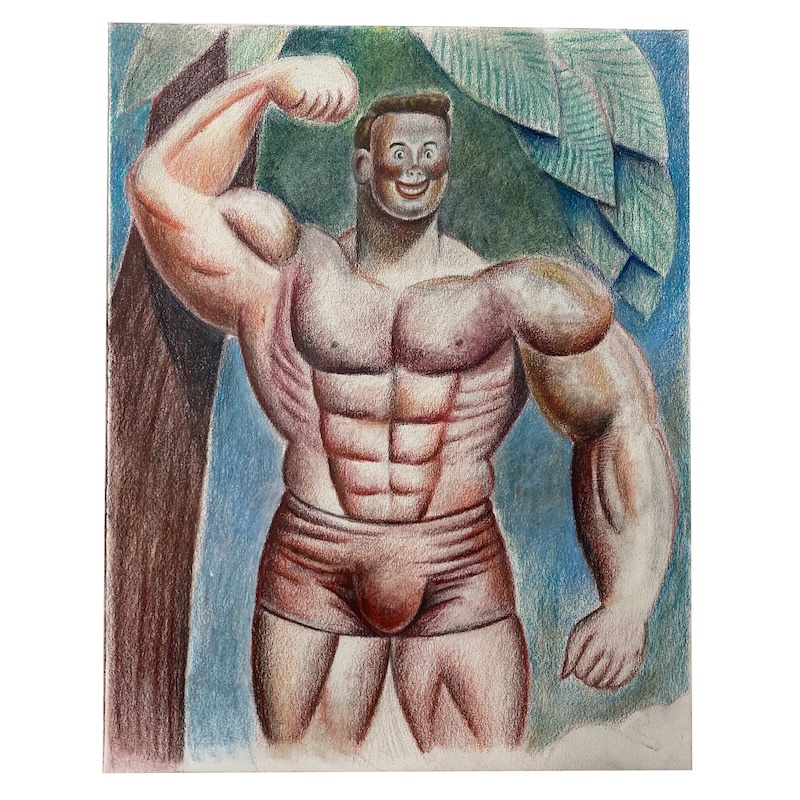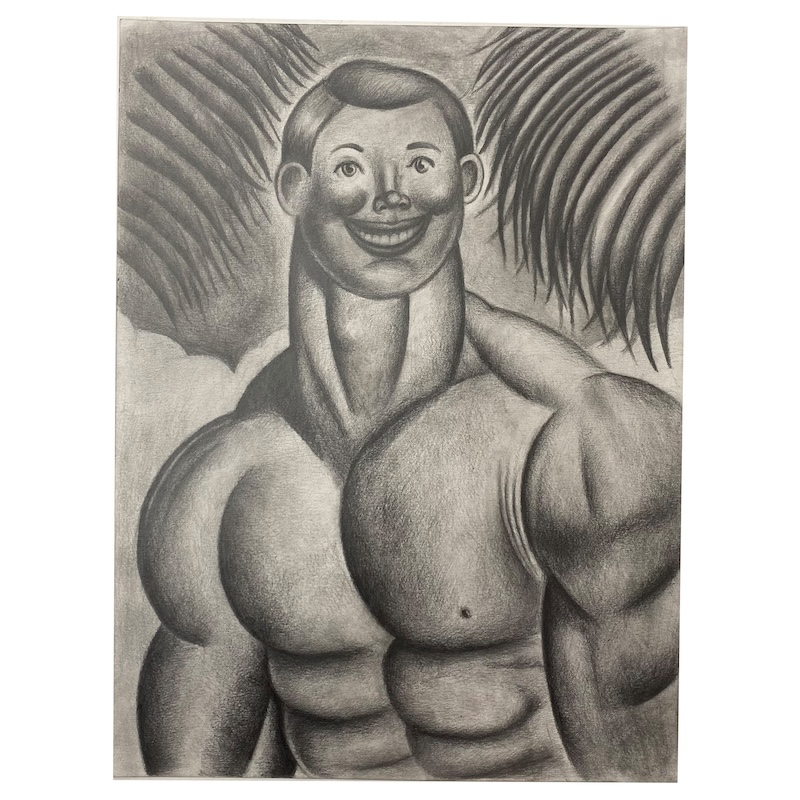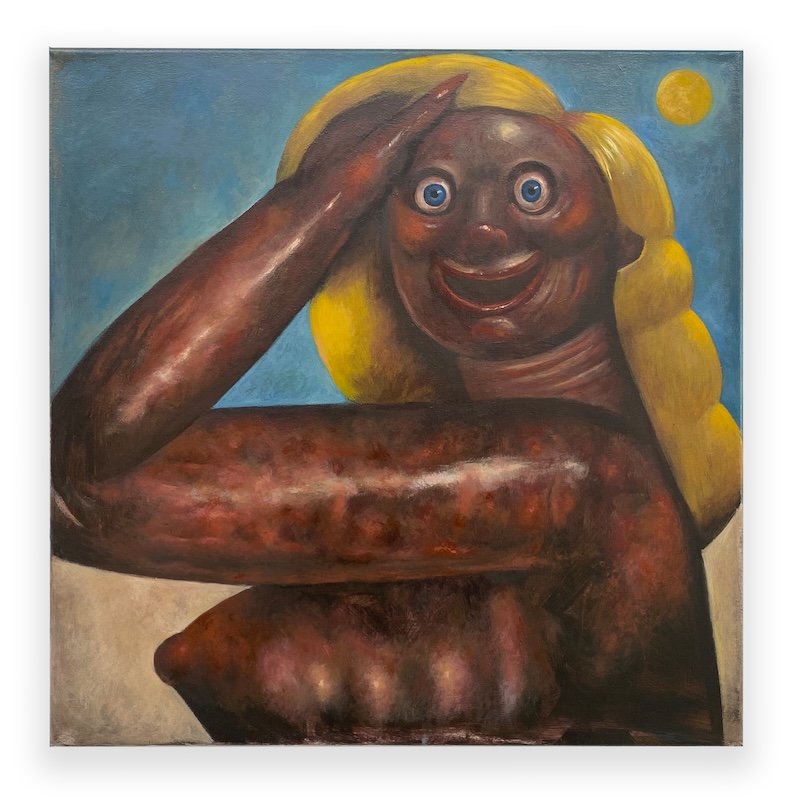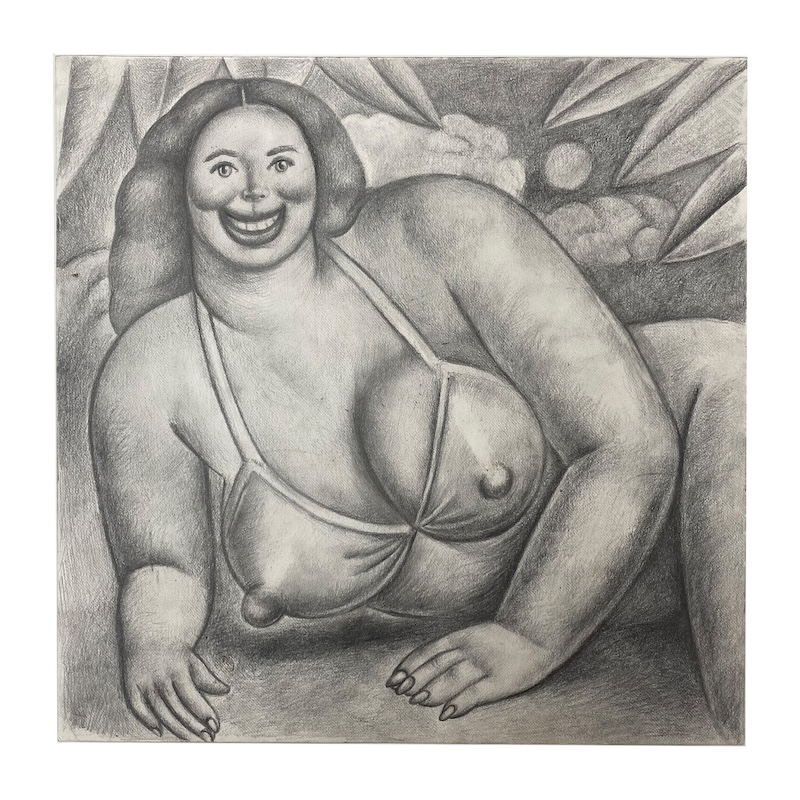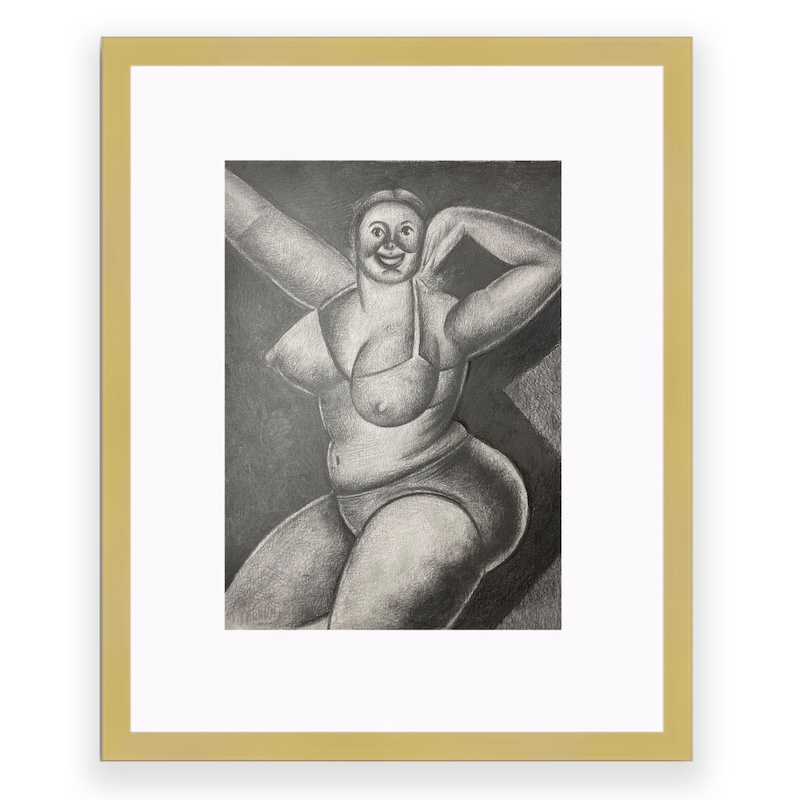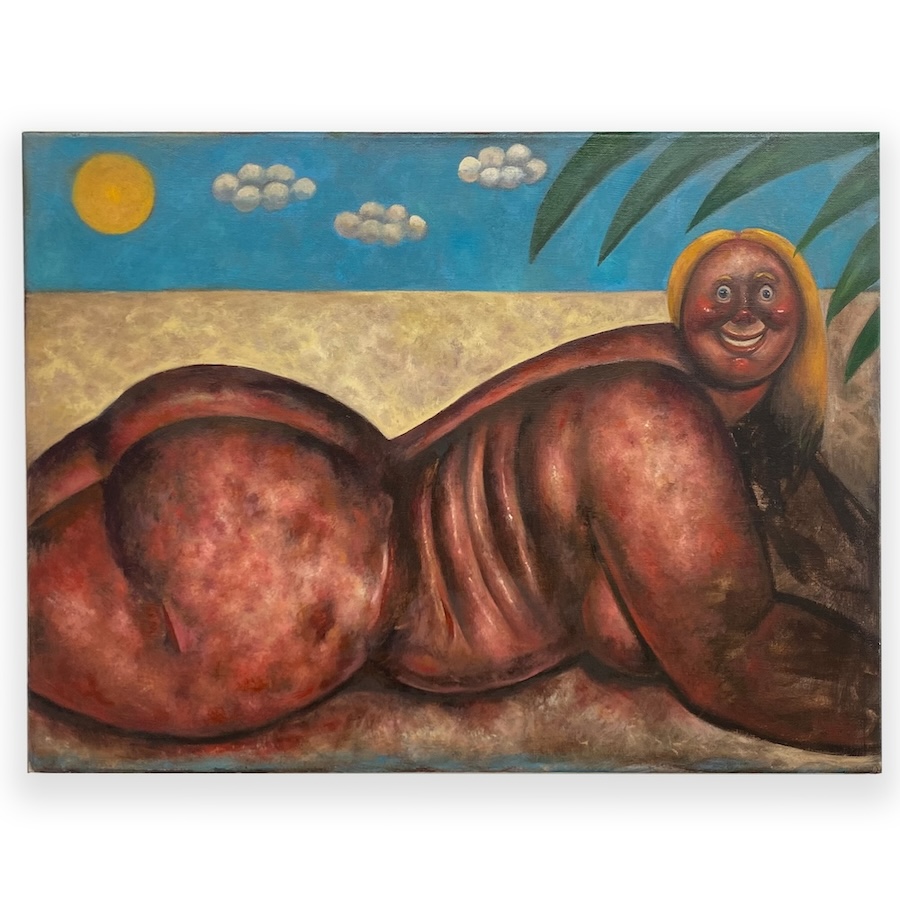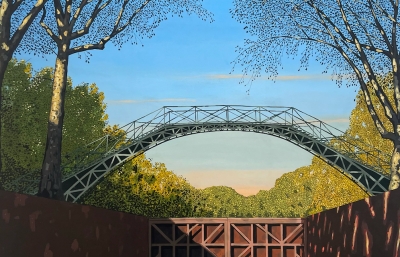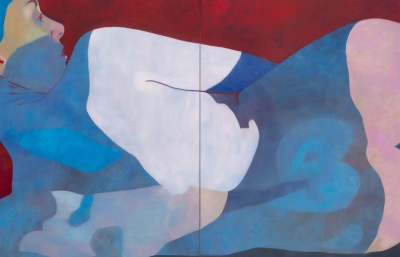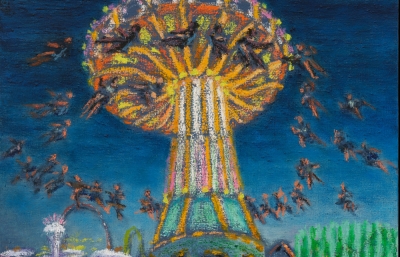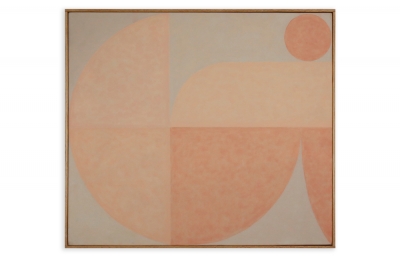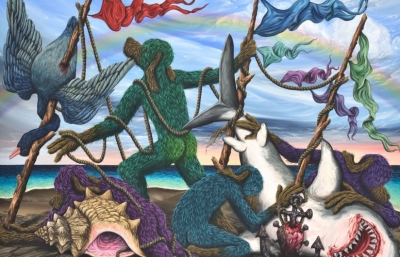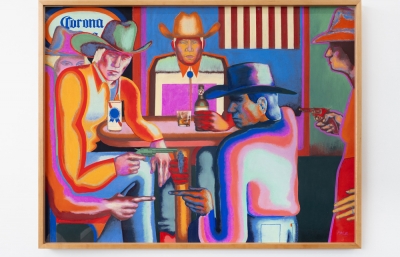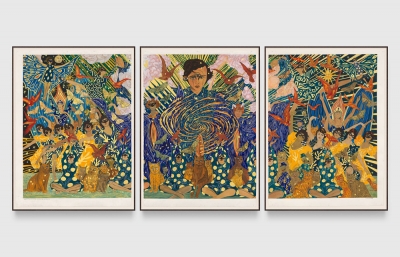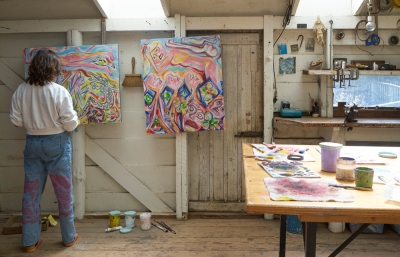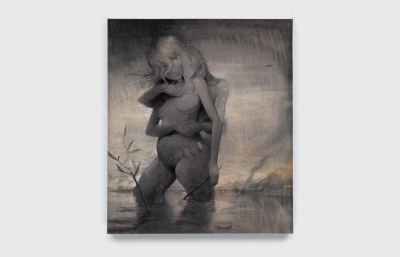Looking back at the advertising campaigns of the 1950s, there is a kind of self-satisfied, comical grin on models being photographed, an almost brimming sense of happiness, as if the product or moment is so good that the beautiful faces simply can’t contain their inherent joy. It’s also quite ominous, in a way—perhaps the smile is possessed by a darker force, and that’s where Amalia Angulo seems to find inspiration as she confronts a place so overbearingly utopian that there might be something rather maddening and foreboding going on outside of the frame. She talks about a sense of well-being and simplicity being at the heart of her work, but as the Cuba-born, NY-based painter prepares for a solo show, Sweethearts, at The Trophy Room in Los Angeles, she also muses about the murals and advertisements of her homeland, as well as the transcendence of painting.
Evan Pricco: If it’s possible to answer, who are your characters, and what world do they live in?
Amalia Angulo: For a few years, my work was quite graphic, with very explicit sexual imagery, but I was talking about shame; although for many, my work was considered erotic and it was quite pornographic, my intention was not to arouse. The characters were not intended to be sexy, but somehow, to others, they were.
These people I paint serve as a means to project all the feelings of inadequacy and experiences that I am trying to overcome. It's a process similar to what happened in Dorian Gray's portrait, but in a different sense. When I create them, it's something very subconscious. Consciously, I couldn't say who they are, so I prefer that each person project their own personal meaning onto them.
What is your daily life in the Hudson Valley like now? And could you summarize, almost in an aesthetic sense, what eventually moving there from Cuba has been like?
My life here involves constant self-discovery, overcoming my weaknesses and shortcomings in order to grow as a person, improve my work each day, and make progress in my life. I left Cuba with my family when I was 14 years old. One of my most cherished memories of Cuba was the countryside that I used to visit with my parents during summertime. I have a deep and intense connection to nature, so arriving here in the Hudson Valley and being able to constantly enjoy it has been a marvel. I love exploring forests, observing plants, and wildlife. There is a strong connection with nature and a rich tradition of hiking, which I thoroughly enjoy. I appreciate the culture here in general, but I'm particularly fond of everything that happens in the state of New York. I feel a strong sense of connection, and while I miss some things from my home country, I consider this place my home and feel immensely grateful to be here.
What I love about your work is that, as you come into the fine art world with paintings, you still have this love of illustration. What was the first graphic novel, illustration, or comic that really drew you in?
Robert Crumb was undoubtedly a great discovery for me, as were the romance comics from the 1950s. My greatest inspiration and role models, however, are the painters I admire and from whom I learn every day. They are so important to me, and there are many of them.
When you lived in Cuba, specifically Havana, what sort of comics or illustrative works were being made, say, by artists we might not know about?
I don't know who the creators are, but I remember the posters, murals, and government propaganda advertising, and they are worthy of study.
How much do you still draw in a day? Or are you mostly painting?
For me, it is as important and creatively necessary to paint as it is to draw. So, I have learned to balance both activities. Sometimes, I find that after intense drawing, painting happens much more quickly, naturally, and intuitively. At times, one part of the work may require more time than the other, but I believe I should keep dividing my time equally between drawing and painting because, expressively, both support each other and are necessary for me.
I read that your father is a sculptor and your mother is a contemporary dancer, choreographer, and painter. So there are elements of performance, including a sort of manipulation of the body in each of their practices. Do you think that influenced the way you began to sort of elongate these almost dystopian faces?
Both my father and my mother worked with the human body as their central theme. In dance, the body is everything, and my father also dedicated himself to sculpting the human figure. Thanks to him, I learned about anatomy and drawing at a very young age, and from my mother, the importance of form and elegance in the movement of the body.
The aspect of distorting and elongating the body became a very important resource for me. In my opinion, it is a highly suitable way of dealing with space. Therefore, it is important to me to have learned the freedom of understanding how anatomy works and then being able to manipulate it as I please according to what I need to say.
You have said that what scares you the most is what hides behind the perfect smile. Okay, so as we think about your process, how do you start painting something that is about this sort of fear? I love that you reference this.
My process is closely related to the work of my subconscious. I want to let it work as freely as possible, like in a trance. I choose innocuous themes that are aesthetically appealing and start with simple images. I avoid highly elaborate compositions, most of the time opting to develop a figure, and then, through a mostly subconscious process, I transform the primary image into something that emerges entirely from some place within me.
Only then is it what I needed to say. I don't think it works for me to formulate a speech and then figure out how to translate it into images. That would be a decidedly illustrative process, but in my case, it hasn't been that way. It's a completely subconscious process that leads me to meaning. Although I am aware of the themes that affect me and the ideals I uphold, it seems to me that the space where I create should be a democratic place where what simmers inside me and has never been expressed has the opportunity to emerge without the guidance of the rational mind.
What of the 1950's advertisement, design, and film aesthetic do you like the most? It feels like you are working in a sort of brilliant pulp tradition but with a contemporary style.
What attracts me most to the aesthetics of the 1950s are the images of comfort, well-being, and simplicity. The vibrant colors, everyone smiling, and everything you need or desire seem to be available, highly accessible, and inviting. It's very suitable imagery as a starting point to develop any narrative, especially a dystopian one.
What's your favorite part of the process? I know this sounds simple, but I think when we talk about technique and influences and then the final product or painting, we don't often ask an artist what their favorite part is.
My favorite part is the minute or two when everything seems to make sense and I feel like I understand perfectly and master what I'm doing. These are short moments, but I appreciate them greatly.
The really beautiful show you did at Hudson House was all in colored pencil, and you obviously make these oil paintings. Maybe give us a little insight into what you like about materials and what they do for you and your work.
When I drew for that show at Hudson House, I was the artist in residence. I stayed there for a month, and it was one of the happiest and most peaceful periods of my life. And I believe that I conveyed that spirit through the brilliance of the color and the happy feeling of those drawings.
Drawing with colored pencils adds a quality of innocence and enjoyment to my work. It's another part of me that I never want to lose. It's related to the precious period of time when I could spend hours and hours reading without being interrupted as a child, absorbed in my own world.
Painting is something so visceral. It demands great self-control; I have to be very careful not to cover or erase the part that is the most important or to realize the precise moment when I should stop or continue. It is deceiving as well. It's like a science, like alchemy. It’s very mysterious and has this ritualistic quality.
What do you have prepared for the Trophy Room in LA this spring?
I'm creating a show that summarizes everything I have evolved in these two years. I'm juxtaposing my two latest solo shows, the one at Sean Horton Presents and the one at Stellar Highway, and I'm very excited about it.
Amalia Angulo’s solo show, Sweethearts, will be on view at The Trophy Room in Los Angeles from February 17— March 23, 2024. This inteview was originally published in our SPRING 2024 Quarterly.

